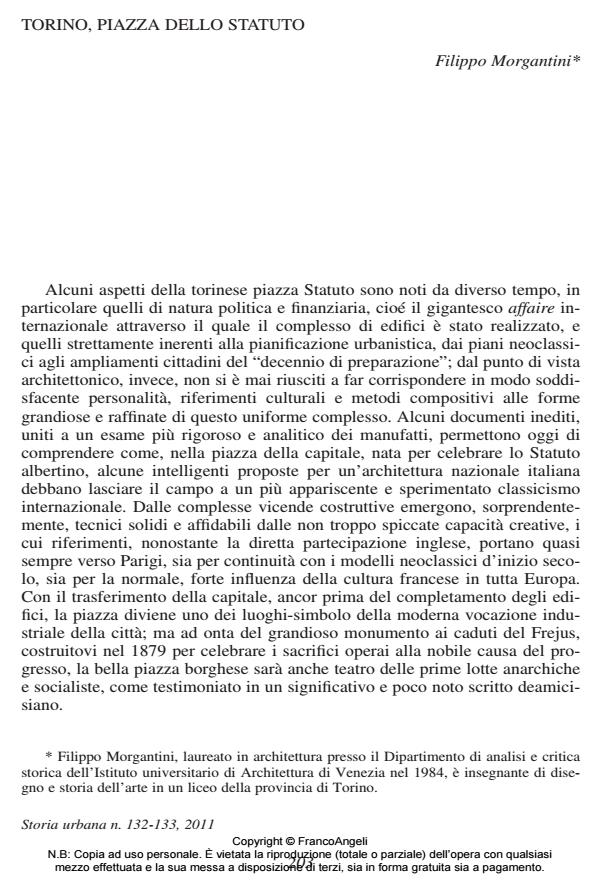Turin, the Piazza Statuto
Journal title STORIA URBANA
Author/s Filippo Morgantini
Publishing Year 2012 Issue 2011/132
Language Italian Pages 24 P. 203-226 File size 5981 KB
DOI 10.3280/SU2011-132007
DOI is like a bar code for intellectual property: to have more infomation
click here
Below, you can see the article first page
If you want to buy this article in PDF format, you can do it, following the instructions to buy download credits

FrancoAngeli is member of Publishers International Linking Association, Inc (PILA), a not-for-profit association which run the CrossRef service enabling links to and from online scholarly content.
Noted especially for its political, financial and town-planning aspects, Turin’s Piazza Statuto still raises many unanswered questions on the cultural references adop- ted and the personalities involved in the refined architectural configuration of the uniform complex of buildings which characterize it. The new study highlights how, in the square built in 1864-1868, to celebrate the Statuto Albertino (the constitution granted by King Charles Albert), some interesting suggestions, aimed at proposing a national (Italian) architectural style, were by more spectacular and well known international classicism. The protagonists of the event were very valid technicians, though not endowed with any remarkable creativity, whose references came from Paris. In spite of the direct involvement of British funds in the intervention of Piazza Statuto, in Turin, as in the rest of Europe, French cultural influence was very strong. After the transfer of the capital city from Turin to Rome, the square, still unfinished, became an emblematic symbol of the modern industrial vocation of the city, which is well underlined by the insertion of the monument to the men who dug the Frejus Tunnel (1879). Nevertheless, literature underlines, even if in a partial and subjective way, how difficult it was to assign a symbolic purpose to that space.
Keywords: Turin - Statuto Albertino - Architecture - National Style
Filippo Morgantini, Torino, piazza dello statuto in "STORIA URBANA " 132/2011, pp 203-226, DOI: 10.3280/SU2011-132007